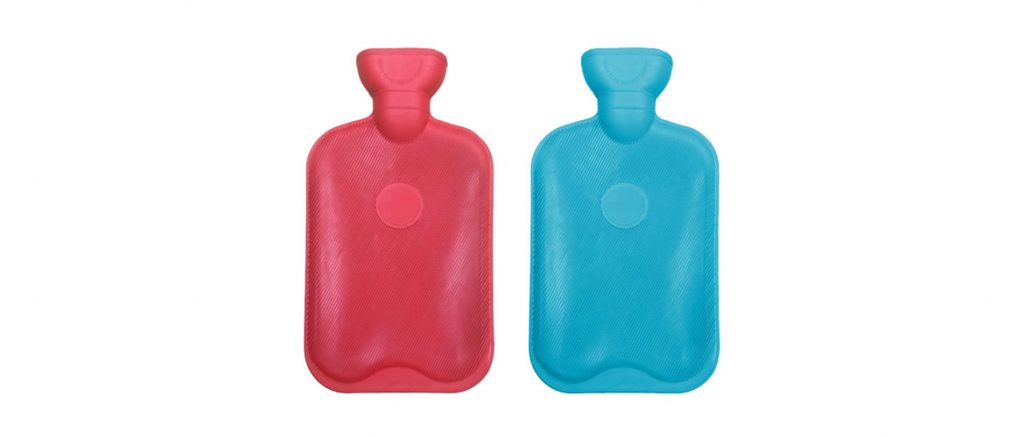When it comes to managing pain, many of us turn to medication for relief. However, there are natural alternatives that can effectively alleviate pain without the need for drugs. One such approach is heat and cold therapy, which has been used for centuries to soothe aches and pains. In this blog, we will explore what heat and cold therapy is, the difference between heat and cold treatment, and the benefits of each for pain relief
What is Heat and Cold Therapy?
Heat and cold therapy, also known as thermotherapy and cryotherapy, are simple yet powerful techniques that involve applying hot or cold temperatures to the body to reduce pain and promote healing. Both treatments work by affecting the way our bodies perceive and respond to pain signals.
Heat Therapy: Hot Pack for Muscle Pain
Heat therapy, often used for pain relief, involves the use of heat to alleviate muscle pain and relax muscles. It can be applied in various forms, such as hot packs, warm baths, or even heating pads. Heat therapy is commonly used to relieve muscle stiffness, joint pain, and chronic conditions like arthritis. When heat is applied, it dilates blood vessels, increases blood flow, and enhances oxygen and nutrient delivery to the affected area. This increased circulation helps to relax muscles, reduce inflammation, and promote healing. Heat therapy for pain is particularly effective in soothing muscle spasms and reducing pain in the joints.
Cold Therapy: Ice Pack for Muscle Pain

Cold therapy, also known as cryotherapy or ice therapy, harnesses the power of cold temperatures to numb pain and reduce swelling. Cold therapy, especially in the form of ice packs, is highly effective in treating acute injuries such as sprains, strains, or bruises. Ice packs, which have a wide range of uses, and benefits, are versatile tools for muscle pain relief. Ice pack uses include targeting specific areas of discomfort, making them particularly valuable for muscle pain. By applying ice therapy, blood vessels constrict, inflammation diminishes, and the area becomes numb, providing immediate relief. Therefore, ice pack uses offer a variety of benefits for reducing swelling and soothing sore muscles.
Difference between Heat and Cold Treatment

Although both heat and cold treatments are beneficial for pain relief, they have different effects on the body and are used for distinct purposes.
Heat therapy, using hot packs or warm baths, is best suited for chronic conditions such as arthritis or muscle pain. The warmth from heat therapy helps increase flexibility, improve circulation, and relieve stiffness. It is particularly effective for soothing muscle spasms and reducing pain in the joints. Heat therapy is not recommended for acute injuries or areas with inflammation, as it can worsen swelling and discomfort.
In contrast, cold therapy using ice packs or cold compresses is ideal for acute injuries or areas with inflammation. When applied immediately after an injury, cold therapy can help minimize swelling, reduce pain, and prevent further tissue damage. Cold therapy is commonly used by athletes to treat sports-related injuries like sprained ankles or pulled muscles. However, it is important to limit the duration of cold therapy to avoid tissue damage from prolonged exposure to extreme cold.
The Benefits of Heat Therapy for Pain Relief

Heat therapy offers several benefits for pain relief and relaxation. When used appropriately, it can effectively alleviate muscle pain and improve overall well-being. Here are some of the key benefits of heat therapy for pain:
1 – Muscle relaxation: Heat therapy helps relax tight muscles, reducing spasms and promoting a greater range of motion.
2 – Increased blood flow: Heat dilates blood vessels, improving circulation and delivering essential nutrients and oxygen to the affected area, which aids in the healing process.
3 – Pain relief: The soothing warmth from heat therapy helps to block pain signals and alleviate discomfort.
4 – Stress reduction: Heat therapy has a calming effect on the body, reducing stress and promoting relaxation.
The Benefits of Cold Therapy for Pain Relief
Cold therapy, also known as ice therapy, has numerous advantages when it comes to managing pain and reducing inflammation. By understanding the benefits, you can make an informed decision about when to use cold therapy. Here are the key benefits of cold therapy:
- Reduced swelling: Cold therapy constricts blood vessels, reducing blood flow and minimizing swelling in the affected area.
- Pain numbing: The cold temperature of ice packs numbs the area and inhibits pain signals, providing quick relief from acute pain.
- Reduced inflammation: Cold therapy helps to decrease inflammation by limiting the release of inflammatory substances in the affected area.
- Faster recovery: By reducing swelling and inflammation, cold therapy can expedite the healing process and promote faster recovery from injuries.
Including Heat and Cold Therapy Into Your Pain Management Regime
Both heat and cold therapy, as forms of hot packs and cold treatment, have their unique benefits for pain relief. Understanding when and how to use them can greatly enhance your pain management routine. For chronic conditions or muscle tension, heat therapy using hot packs or warm baths can provide soothing relief. On the other hand, for acute injuries or areas with inflammation, cold therapy using ice packs or cold compresses is recommended.
Ice pack uses are diverse and versatile, making them a valuable tool for targeting specific areas of pain or swelling. Ice packs for muscle pain are particularly effective in reducing inflammation and soothing sore muscles. Similarly, hot packs for muscle pain can provide comforting warmth and relaxation.
It’s important to note that heat and cold therapy should be used cautiously and in moderation. Always follow the recommended guidelines and consult with a healthcare professional, especially if you have an underlying medical condition or are unsure about the appropriateness of these therapies for your specific situation.
Conclusion
In conclusion, heat and cold therapy are effective and natural approaches to pain management. Heat therapy, through the use of hot packs, helps relax muscles, increase blood circulation, and reduce stiffness. Cold therapy, using ice packs, helps numb the area, reduces swelling, and alleviates pain associated with acute injuries or inflammation. Understanding the difference between these treatments and their benefits can empower individuals to make informed decisions when seeking relief from pain. Whether it’s heat therapy for chronic conditions or cold therapy for acute injuries, incorporating these natural therapies into your pain management routine can provide significant relief and promote healing.

